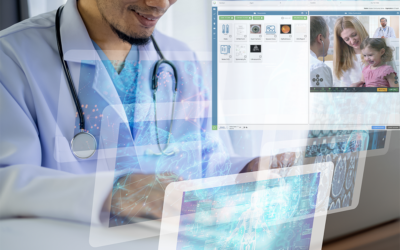About TeleHealth Solution
Health providers who work at skilled nursing facilities understand the importance of delivering the best quality care possible. However, they don’t always have the resources and support they need to do so, leaving them no choice but to send vulnerable patients to the emergency room, regardless of the time of day.
After watching elderly, defenseless patients arrive at the emergency room in the middle of the night, Hospitalist Waseem Ghannam, MD, MBA, MHSA, knew it was time to form a solution for the broken system that exists in skilled nursing facilities today. That’s when he co-founded TeleHealth Solution. Designed to implement evaluation and treatments before acute illnesses escalate, while also reducing costs for patients and SNFs, TeleHealth Solution’s care model enables patients to receive high-quality care from the comfort and convenience of their room.
“TeleHealth Solution helps its SNF customers provide care in a concierge level manner.”
“Providers are usually not available during the evening and weekend hours so when a patient has an acute medical need, the easiest answer is usually to send the patient right to the hospital which can be very disruptive for them,” Dr. Ghannam shared. “How nice would it be that you could see them in their room remotely, examine them, prescribe medication or a treatment plan?”
TeleHealth Solution helps its nursing home customers provide care in a concierge level manner, on the spot and at a more cost effective rate. By forming a partnership with AMD Global Telemedicine, TeleHealth Solution is leveraging reliable telemedicine technology to provide telehospitalist services that treat more patients in place so they can avoid unnecessary transfers and reduce hospital readmission rates.
With hospitalist physicians using telemedicine technology, they are able to evaluate and treat various acute illnesses including the five conditions that are responsible for over 80% of hospital readmissions- CHF, COPD, dehydration, pneumonia, and UTI.
“Pneumonia is one of the most common reasons our doctors are called to evaluate a patient,” commented Dr. Ghannam. “In most skilled nursing facilities where telemedicine is not implemented, the patient would have to be transported to the ER for work up and treatment where they would likely stay for several days. Instead, the nurse calls us over video, we exam the patient remotely by listening to their heart/lung sounds with a digital stethoscope, we check their oxygen saturation, and review their labs. If we have determined that the patient has pneumonia, we will start them on antibiotics, place them on oxygen, continue to monitor them, and call the family to let them know what is going on. All of this happens while the patient remains at the nursing home and an ER visit and hospitalization is avoided.”
History and experience with telehealth is one of the many reasons Ghannam chose to work with AMD Global Telemedicine.
“They’re pioneers in this industry,” said Ghannam. “Everyone thinks [telemedicine] is new. It’s not. It’s just that the cost and speed of technology has reached a point that allows us to operate like this, but they’ve been doing it for 27 years. To align with an organization that’s been out and about for that long in an industry that’s right now exploding, lets me know that they’ve seen it all and they’ve been through all of these different phases.”
Some of the key components of the AMD technology used often by Dr. Ghannam and his team include AGNES Interactive, a digital stethoscope and wireless EKG.
“I think one of the nicest things about AMD’s technology is that the platform allows for our remote telehospitalist to basically control the entire patient encounter from start to finish, including activating all the attached medical devices and peripherals. This just makes it even easier for us because at night, nursing home nurses are very busy so you can’t expect them to suddenly be IT people and know how to operate a unit and so it allows us to have a quality control.”
Dr. Ghannam wanted to provide SNFs with an easy-to-navigate solution.
Another reason Dr. Ghannam chose to work with AMD was how user-friendly the tools are, making it seamless for his nursing home customers to use and understand. If he was handling complicated software, he knew it would cause challenges with his nursing home customers and prevent them from using it.
“What I loved about AMD is they’re not focused on the hardware – they’re focused on improving access and creating the most user-friendly experience as possible.”
Waseem Ghannam,MD, MBA, MHSA,
Hospitalist TeleHealth Solution
“What I loved about AMD is they’re not focused on the hardware – they’re focused on improving access and creating the most user-friendly experience as possible,” Dr. Ghannam shared, referring to the AGNES Interactive software and some of the facilities management technology customized for his clients by AMD.
The customer service was another huge selling point for Dr. Ghannam. He wasn’t just looking for a telemedicine vendor – he was looking for a partner.
“Whether you’re speaking with the president or the head of sales, you don’t feel like a customer. You feel like a partner. I brought them some of our clinical challenges and they were able to adapt their platform to our physician’s specific challenges and eliminated any barriers to adoption and clinical effectiveness.”
“The expansion of our company could not have happened without AMD,” Dr. Ghannam shared. “It couldn’t have happened if they had not listened to what we needed, supported us through the transition and provided a platform solution that was scale-able.”





